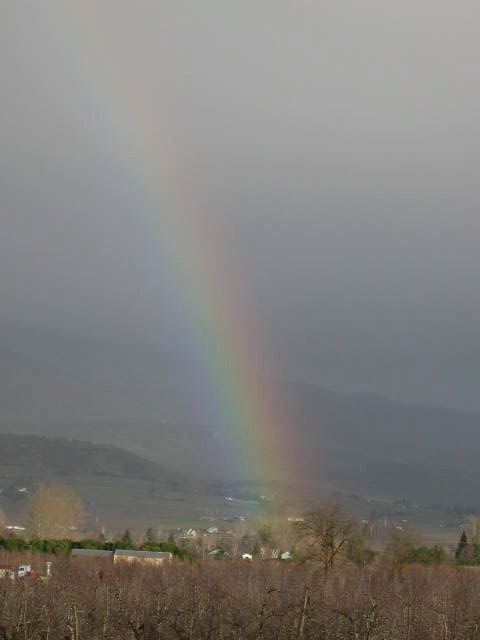Page 1 of 1
Photo question
Posted: Thu Jan 21, 2010 12:39 pm
by nota
Why is it that every picture of a rainbow I've ever tried to take is less than the actual sight? I'm here in Honolulu and saw a beautiful bright huge rainbow from the top of my friends' mountain down to the ocean and the pictures I took are all washed out. Crisp of the scenery around it but the rainbow itself is kind of washed out.
Re: Photo question
Posted: Thu Jan 21, 2010 4:06 pm
by taxi
The sky/rainbow is much brighter than the earth/scenery. Your exposure, I'm guessing decided in auto mode by your camera, is for the ground and therefor your sky is over-exposed, washing it out. If you take 2 exposures, one for the earth and one for the sky, you can combine them any number of ways and get the image that is closer to what you see with your eye. This is best done on a tripod, but can be done hand-held. I would point the camera at the ground, in auto, and read what it says. Then do the same for the sky, pointing of course at the sky (as close to the horizon as possible). Then manually set your exposure for both extremes. You can try to average the 2, but it'd be better to combine them and shoot 2 shots. Again, there are several ways to do that with photo editing software, like photoshop. And if you're on a tripod, you might as well bracket and take several shots and decide later which ones to use.
Re: Photo question
Posted: Thu Jan 21, 2010 5:22 pm
by nota
Thanks!!! After I read that a couple of times, I think I get it. I have a tripod with me. Just don't have any more rainbows at this time

Supposed to be some more rain tomorrow. Will try again. Thanks again.
Re: Photo question
Posted: Thu Jan 21, 2010 6:25 pm
by staubio
Or, if you only care about capturing the rainbow, set your exposure compensation back -1 EV or so. That'll tell the camera to take the reading it thinks is right and adjust it backward, which will then bring back some details in the blown out sky at the expense of the details in the dark parts of the ground.
It is all about dynamic range. The human eye can see darker darks and lighter lights at the same time while a camera cannot, so you can do the process taxi describes, called bracketing, or you can just decide which one to capture at the expense of the other.
Re: Photo question
Posted: Thu Jan 21, 2010 7:04 pm
by elextendo
Why is it every time I shoot a unicorn, the photo comes back without the horn?
Re: Photo question
Posted: Thu Jan 21, 2010 7:35 pm
by bbqboy
Re: Photo question
Posted: Fri Jan 22, 2010 12:09 pm
by taxi
elextendo wrote:
Why is it every time I shoot a unicorn, the photo comes back without the horn?
Because that's not a horn!


